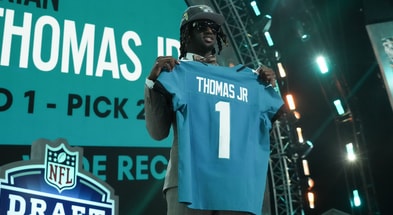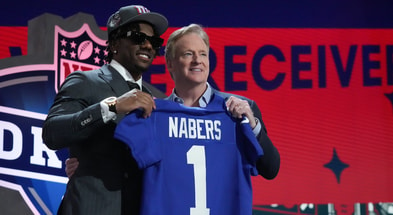LSU's Derrick Davis Jr. enters NCAA Transfer Portal
LSU sophomore Derrick Davis Jr. has entered his name into the NCAA Transfer Portal.
Davis, who signed on with the Tigers in 2021, moved from safety to running back this season to help alleviate depth concerns at the position.
He appeared in four games during head coach Brian Kelly’s first season in Baton Rouge.
Across those four games, Davis had four total tackles on defense and carried the ball five times for 28 yards. All of his carries game in a late-November win over UAB.
As a freshman in 2021, Davis appeared in 12 games, seeing action on special teams. He finished his freshman year with two tackles.
Davis left high school in Pennsylvania ranked by the On3 Consensus as a four-star and the No. 5 safety in the country and the No. 83 overall prospect in the 2021 class.
Davis was ranked by On3 as a four-star and the No. 16 safety in the country, closing out his high school career as the No. 188 overall prospect in the class.
Brian Kelly updates LSU’s approach to the Transfer Portal
Following the SEC Championship, LSU head coach Brian Kelly went into more detail on his plan to attack the NCAA Transfer Portal over the next 45 days.
“They have got to be the right fit first,” Kelly said. “They have to recognize the value of an education from LSU. They have to have the right traits. We are not just open for business. We’re not just putting a sign up saying, hey, we are going to take whoever. They have to be the right fit. I prefer that they are from the state of Louisiana if we can find them. And then we are going to address needs based upon how that freshman class marries into it by the particular needs by position class.
“So we are not going to overload a particular position group. In other words, if we have got three or four wide receivers that are freshmen coming in, you may not see a heavy influence in the portal in that position.
“We are going to develop based upon our freshman class, too. So we are doing this at the same time, and also allowing our program to be younger, too. We want to bring both of these along. We don’t always want to be a turn-it-over program where we are bringing in transfers and turning the program over.
“So we need to grow and you’ve got to do that by recruiting freshmen and giving them the opportunity to step on the field and develop. And you can’t do that if you keep bringing in freshmen at one position and then bringing a portal guy who has got one year and putting it in front of him.”
The Transfer Portal Windows
The NCAA Transfer Portal’s newest rules will allow 60 days per year for student-athletes to enter the portal and maintain immediate eligibility for first-time transfers. For fall sports like football, the window will be split into two periods.
The first, a 45-day period, begins December 5. A second window will be instituted from May 1-15, giving players an option to enter the transfer portal after spring camp.
The first portal window will close on January 19.
The Transfer Portal Guidelines
The NCAA transfer portal, which covers every NCAA sport at the Division I, II and III levels, is a private database with names of student-athletes who wish to transfer. It is not accessible to the public.
Once a player’s name shows up in the portal, other schools can contact the player. Players can change their minds at any point and withdraw from the portal. However, once a player enters the portal, the current scholarship no longer has to be honored. In other words, if a player enters the portal but decides to stay, the school is not obligated to provide a scholarship anymore.
The database is a normal database, sortable by a variety of topics, including (of course) sport and name. A player’s individual entry includes basic details such as contact info, whether the player was on scholarship and whether the player is transferring as a graduate student.
A player can ask that a “do not contact” tag be placed on the report. In those instances, the players don’t want to be contacted by schools unless they’ve initiated the communication.
























